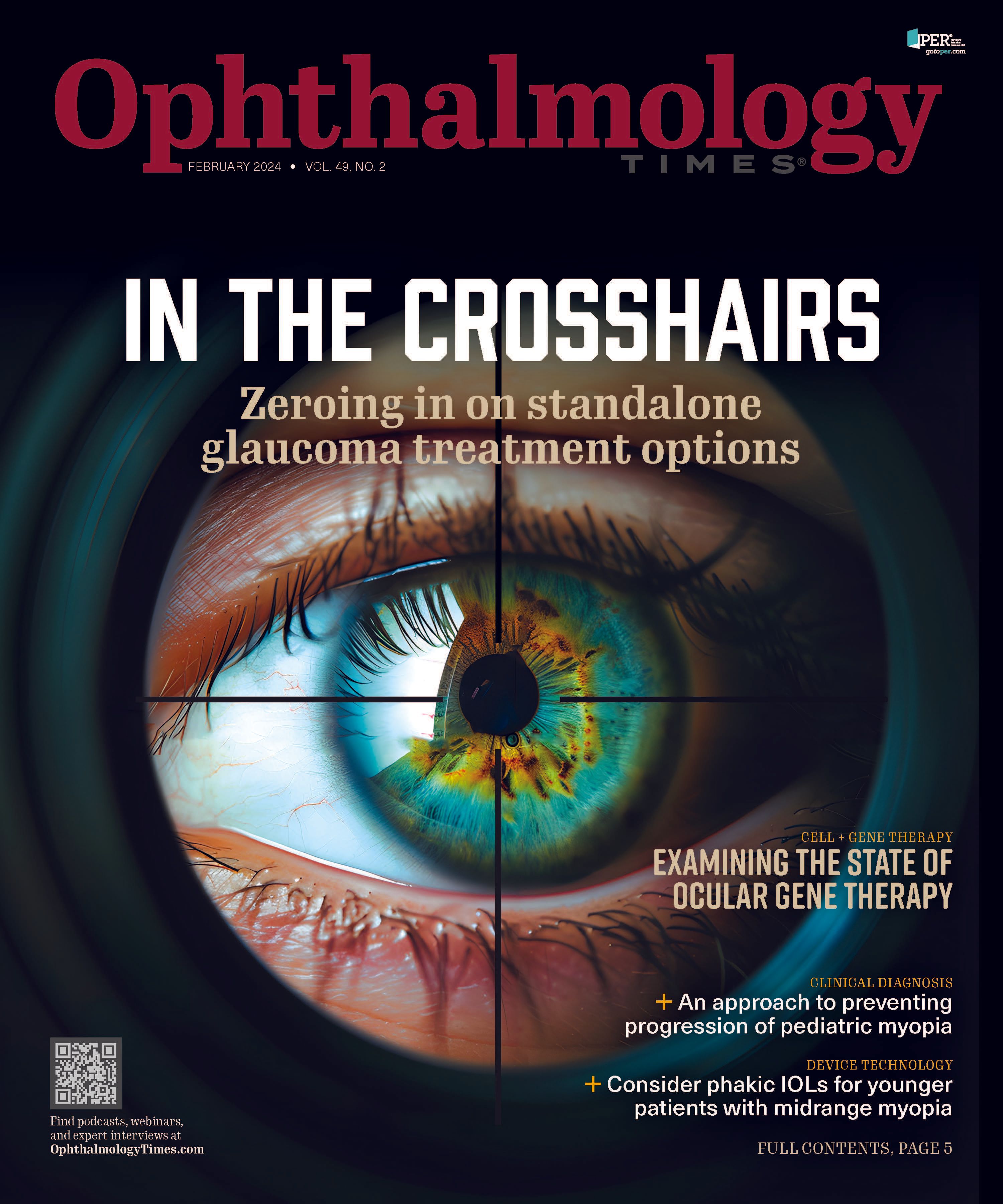News
Article
Digital Edition
Ocular gene therapy: The good, the bad, and the maybe
Author(s):
David Eichenbaum, MD, discussed the status of the technology at the Retina 2024 meeting in Maui.
(Image Credit: AdobeStock/Dmitrii Kotin)

Ocular gene therapy is not yet ready for prime time, according to David Eichenbaum, MD, who discussed the status of the technology at the Retina 2024 meeting in Maui. He is Director of Research, Retina Vitreous Associates of Florida, and Volunteer Collaborative Associate Professor, Morsani College of Medicine, University of South Florida, Tampa.
“We're still in the infancy of gene therapy. The potential of gene therapy is very exciting,” he said.
In his presentation, Eichenbaum defined gene therapy and described its use in common retinal disease.
The Good
In common retinal disease, he explained, the approach is gene augmentation, ie, in neovascular and atrophic macular degeneration and diabetic retinopathy the cells inside the eye are altered to become biofactories to produce therapeutic protein. This is thought to be better than frequently intravitreally injecting therapeutic proteins into the eye routinely as done for wet macular degeneration and diabetes and recently for atrophic macular degeneration with geographic atrophy.
The potential positives of gene therapy are the possibility for a single treatment, the absence of indwelling devices, and continuous protein production forever, the last of which may also be a drawback.
He described the process of gene augmentation, what makes up a gene therapy, and the process of transduction, how the gene therapy becomes an intracellular/intranuclear change to the cell's DNA and how the treatment theoretically will impact common retinal disease, especially for patients with a high treatment burden, to prevent progression to proliferative retinopathy. “The prospect of eliminating frequent injections is very exciting,” he said.
The safety of these products is an important issue, ie, how they are administered, the best vectors, the best capsids, and the best protein products. “There is a lot of hope that gene therapy will successfully affect our most highly burdened patients and give them good outcomes with a reduction in the number of treatments that they need,” he stated.
One noteworthy success with ocular gene therapy is voretigene neparvovec-rzyl (Luxturna, Spark Therapeutics) developed to treat Leber congenital amaurosis and approved by the FDA in late 2017. In this technology, adeno-associated virus transduces a functional copy of the RPE65 gene into retinal pigment epithelial cells to compensate for the RPE65 mutation. The therapy is injected into the eye through a retinotomy after vitrectomy and separation of the posterior hyaloid.
The Bad
A potentially less beneficial aspect of gene therapy is protein production forever. The change that is made to the cell cannot necessarily be turned off, Eichenbaum said. This chronicity is associated with 2 major adverse events, the first of which is intraocular inflammation, which occurs to some extent in all gene therapy programs. He reported the need to follow this with extension studies and long-term follow-up because the gene product is produced forever.
The second event in some higher-dose subretinal gene therapy programs is unusual pigmentary changes. Some patients, he pointed out, have lost vision from these in the early-phase investigative programs. “We need to be able to predict and prevent it if we're going to bring gene therapy into primetime,” he advised.
The Maybe
“The maybe goes back to the patients,” he said. “We may be able to take our patients who are the most highly burdened and reduce their dependence, cost, hassle, their discomfort, family's and caregiver's time in coming to the retina specialist sand receiving ongoing treatment—which does benefit patients in large part if they come in frequently for treatment for high-burden disease, but we'd love to be able to provide that benefit without the high burden and that's the maybe. Can we do this; can we affect the patients positively with this novel new technology?”
Eichenbaum concluded that while there is established success in the eye with voretigene neparvovec-rzyl, gene therapy remains investigational for common retinal disease with existing therapy. “This is why we have clinical science and development! We are here to figure this out and see where it may fit. Clinical medicine is not one-size-fits-all.”

Newsletter
Don’t miss out—get Ophthalmology Times updates on the latest clinical advancements and expert interviews, straight to your inbox.




